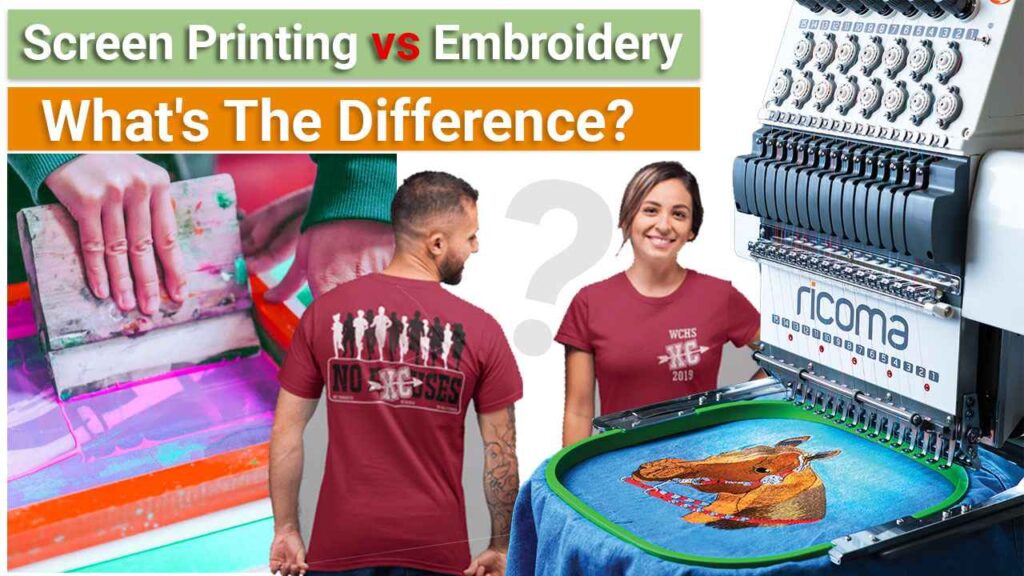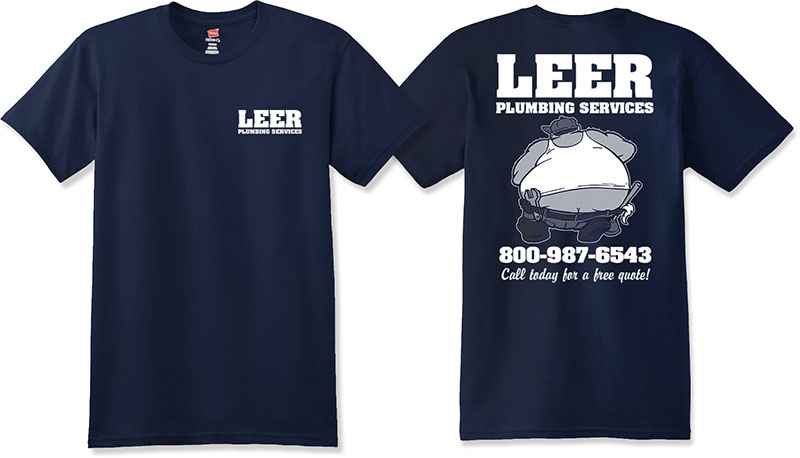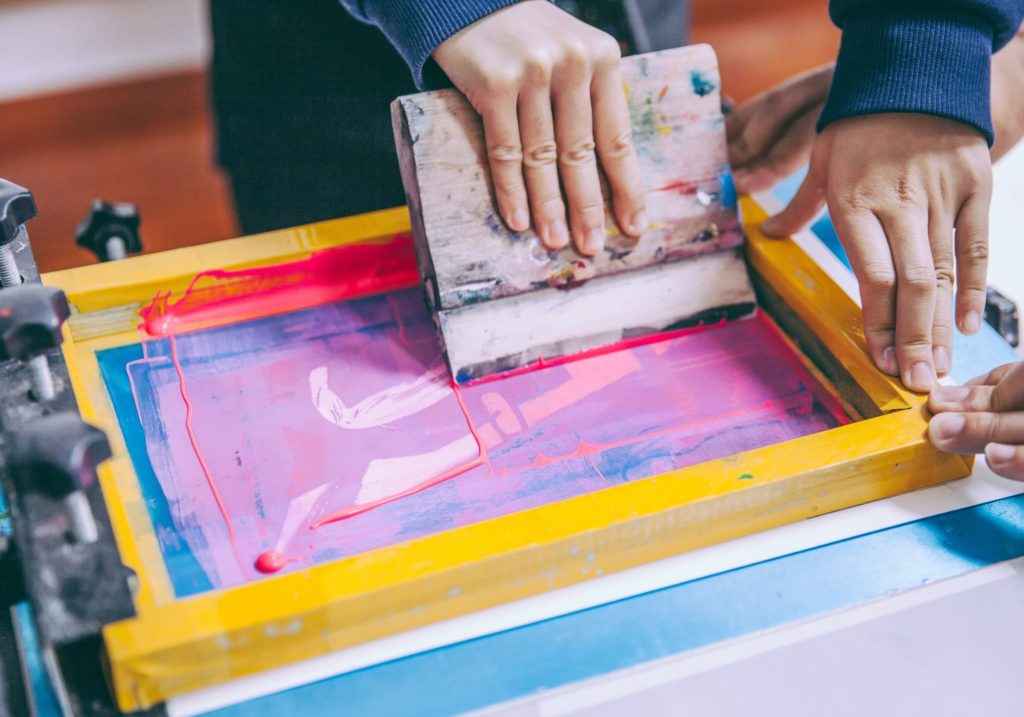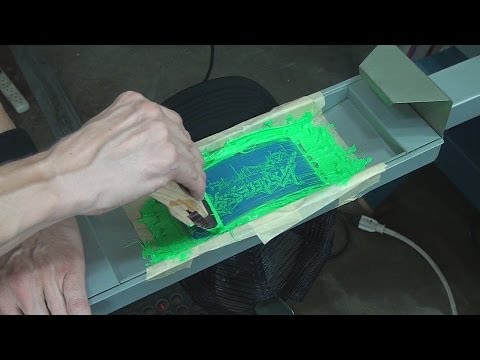Screen Printing vs Embroidery the most popular decorative clothing processes on the market are by far screen printing and embroidery. A screen-print, plastisol, and squeegee are used to print by screen printing or custom printing so that the content is reflected on the fabric.

Screen Printing Vs Embroidery: What’s The Difference
Introduction:
It’s not easy to make these items. Labels, garments, and labels are used for printing. Embroidery needs just cloth, on the other hand. Only a spool, machine needle, and thread are required for embroidery. The similarity between the two methods is that the final picture is shown by both machines.
Screen printing is undoubtedly the largest market share for specific applications, and embroidery has unquestionably an advantage. There are several variables to consider in determining which clothing decoration method to use, but this is where every technique has its benefits.
Embroidery Digitizing
&
Vector Art Services
Are you looking for embroidery digitizing and vector art services at low cost with superfast turnaround, guaranteed quality and preview before pay? So, you are at right place. We can digitize and vectorize any type of artwork in your required file format.
Image Size:
The first difference b/w screen printing vs emrbroidery is image size. No doubt A screen size is more significant for screen printing. Embroidery tends to accumulate fabrics and in large sizes can be lighter and scratchy. In large sizes, as the screen-printing price does not shift drastically between small pocket prints and large back prints, embroidery is also far relatively more expensive.
Corporate look:
The 2nd difference b/w screen printing vs emrbroidery is Corporate Look.Embroidery is often beautiful when it comes to enterprise applications. Small company logos embroidery business shirts look more professional than screen printing.

Soft hand:
The 3rd difference b/w screen printing vs embroidery is Soft Hand.The decorative feeling on the skin is called “hand.” “Soft hands” means that the printed surface cannot be easily separated from the fabric. “Hard hand” means the printing position is much more complex and challenging than the material itself.
When you print water-based ink, since it penetrates the fabric and becomes a part of the fabric, you get a smooth, hard to distinguish hand texture during printing. Due to the high density of the stitches used, embroidery is always like rough hands, and the embroidery can get scratched.

Headwear:
The 4th difference b/w screen printing vs embroidery is Headwear. While screen printing on hats and various other headwears can work, no doubt embroidery is the most appropriate choice. Most bottle caps’ seams stretch down the center of the front cap so that it is hard to print or transfer heat. One exception is the pre-blast trucker cover. Their screen printing works well, but when perusing, they can also produce incredible effects. The foam presses down and creates a 3D effect where the embroidery is located.

Cost:
Cost also the major difference if we compare screen printing vs embroidery. Both approaches have their pros and cons.
Pros And Cons Of Embroidery:
Embroidery is the process where a logo is attached, or a symbol is sewn on a cloth (such as a shirt, jacket, or hat). Embroidery is an excellent means of customized clothing for every organization. It’s clean, simple, shows the logo, and makes it perfect for embroidery businesses. Furthermore, the embroidery impact is durable. If handled properly, after continuous washing, it will not diminish or stick. Your embroidery would instead become an integral part of the fabric.
Despite its many benefits, embroidery isn’t ideal for each project. Embroidery is usually more costly than printing screens. Some companies are opting for screen printing for large projects. Moreover, you generally pay for the number of best threads, so it is not the most economical choice to broader a broad logo. All the embroidery work is different.
Pros And Cons Of Screen Printing:
Printing with the screen uses ink to print the logo onto an individual item from the screen. The screen printing looks fine, and it will last a long time if handled correctly. Unlike embroidery on the fabric, a variety of materials can be used for screen printing. Screen printing may do the job whether you want to put the logo on a coffee cup, tote bag, pressure ball, or T-shirt. Screen printing is generally cheaper than embroidery, so it is highly suited for large orders and logos.
Although various materials can be applied to screen printing, thick and fuzzy materials such as woolen coats are not good enough. Embroidery can be a better choice in these situations. Screen printing jobs generally take more time than embroidery projects. Your design requires a custom screen with pictures that may be time-consuming. Of course, each project is different.
conclusion:
Our conclusion of Screen Printing Vs Embroidery: The best choice is screen printing when the budget is tight. You can save and buy your printing machine, which allows you to purchase the next device. The distinction between these two approaches is essential to understand. High-quality embroidery is an art, and not many people allow such embroidery. You can design your shirts and beach equipment to suit your needs. You can now make a decision depending on the situation since you understand the difference.
Frequently Asked Questions
Durability is another concern, and this is where embroidery is frequently considered the best choice as compared to screen printing. An embroidered pattern, which is stitched directly into the material, is much more likely to last for a long time as compared to a screen-printed pattern, which is printed on top of the material. One of the problems with screen printing is that the pattern could fade and crack easily with time. This is particularly if the clothing is not cared for properly, which means washing it cautiously. Embroidery, on the other hand, is less likely to show any damage or fade. With quality stitching, it could last for the longest time. An item of screen-printed clothing can be damaged in a minute if it is put in the washing machine at the wrong temperature or ironed on the wrong side. Embroidered logos do not show such issues, however, the stitching could be hurdled or ruined sometimes. Embroidery makes a pattern with a nice weight amount that looks decent, classy, and sophisticated and must last for a long period. The pattern is in 3D, as opposed to the flat pattern of a screen-printed logo, and the strong thread shows a shine that makes the logo appealing as well.
Huge logos or pictures would obviously cost more with embroidery because they could take hundreds and thousands of stitches to create using more thread and take more time to finish. This is where screen printing is definitely less expensive as compared to embroidery. Screen printing is a smart but amazing way of printing different patterns on different products such as hoodies, t-shirts, and team wear to stand out from the public. It is trendy amongst a wide range of businesses and it is utilized for making bold artwork, posters, and canvases. Once you start knowing how to screenprint, you will notice that there are a lot of different types of screen printing. A few of the most extensively used methods are: 1. METALLIC INK SCREEN PRINTING 2. GLOW IN THE DARK INK SCREEN PRINTING 3. PUFF INK SCREEN PRINTING 4. WATER-BASED SCREEN PRINTING 5. REFLECTIVE INK SCREEN PRINTING 6. FOIL INK SCREEN PRINTING 7. DISCHARGE SCREEN PRINTING 8. JUMBO-SIZED SCREEN PRINTING TIPS FOR BEST SCREEN PRINTING: 1. HIGH DPI SCREENS 2. DRYER 3. A SUPER OPAQUE LABEL TO GET A BRIGHTER COLOR PRINT
Cost is the biggest concern for every entrepreneur who needs to have clothing or accessories personalized. It already costs a little more to have something customized than to only purchase it as it is, so you do not want to overspend. One thing to remember, neither option would always be cheaper. Which one is more cost-effective would rely on a range of factors, including the intricacy of the pattern, where you have the work done, the design size, and the clothing quality that you would use? If you select embroidery, you would generally be looking at flat-rate costs that do not rely on how many colors are used in the pattern. Although with screen printing the number of colors makes a huge difference. Every new color needs a new mesh screen, which increases the costs. Most embroidery would allow you to have up to fifteen colors at little to no additional cost. Although huge logos and patterns are likely to be cheaper with screen printing, huge orders could lessen the costs as well. Screen printing can be made more reasonable by selecting a local company, lessening delivery costs.
Often you could select a pattern from the print material and find the same embroidery motif and it could be stitched in similar colors. Failed embroidery patterns become a prominent feature when sewn over a print, same as appliqué motifs. Now, can you embroider on-screen print? So, generally, screen printing is less costly as compared to embroidery so it is best for bulk orders and big logos. However, screen printing works on a range of materials, it does not work fine on thick or fuzzy fabric, like jackets, or fleece. For these examples, embroidery is the best option. Also, embroidery is often seen as the more durable choice and could give expert outcomes for uniforms, etc. On the other hand, screen printing could sometimes be more cost-effective, particularly when using local services, and is often the finest choice for bigger patterns.
PROS OF SCREEN PRINTING: 1. COST EFFECTIVE FOR BULK QUANTITIES – As this is a way that needs the production of screens for each color utilized in an artwork, it is finest reserved for bulk orders. The more garments placed in an order then the lesser the cost per unit would be. 2. SIMPLER TO PRINT ON PARTICULAR GARMENTS – It is complex to find a printing technique as flexible as screen printing. It could be done on almost any surface as long as it is even, flat, material, wood, plastic, and metal, among a lot of others. 3. NUMEROUS INKS COULD BE UTILIZED – Screen printing enables for greater thickness of the ink as compared to the other methods, which outcome in greater possibilities when it comes to the end of the piece. 4. EVERLASTING & RELIABLE QUALITY – Because of the composition and thickness of ink utilized in screen printing, patterns placed in this way could withstand far more stress than others without losing the printing quality.












